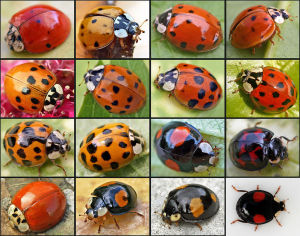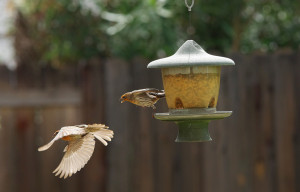California deer are suffering from an infestation of non-native lice that’s causing baldness and other health problems.
The California Department of Fish and Wildlife (CDFW) first made the connection in 2009 when researchers found a dead deer in Tuolumne County.
“When we went out to investigate we noticed that the deer that were dying had hair loss and were infected with non- native louse,” said CDFW senior wildlife biologist Greg Gerstenberg.

Since then, research has concentrated in Tuolumne and Merced counties, where infected deer appear to be weakened and vulnerable to predation because of excessive grooming. An infected deer captured along I-280 indicates that Bay Area deer are also at risk for the condition. The invasive species of biting lice normally feeds on fallow deer, which is native to Europe and Asia.
“What we do know is that the louse has impacted migratory populations of California deer which now have a low fawn survival rate, making it difficult to replenish the herd,” said Gerstenberg.
The hair loss ranges from a patchy coat to near baldness, and could be caused by the deer’s excessive scratching and grooming. However, researchers have found that some deer, particularly those near the Sierras, are experiencing the hair loss even with an absence of non-native lice.
This is perhaps indicative of a larger problem related to poor nutritional conditions including a copper and selenium mineral deficiency. But Gerstenberg said this connection is difficult to establish.
“We’re looking at the micronutrient levels on louse infected deer and louse-free deer to determine whether low levels occur whether the deer are infected or not,” said Gerstenberg.
California deer are accustomed to dealing with native lice, and can usually keep a population of the blood-sucking insects in check. Not true with this exotic lice. When researchers examined a 4-inch section of deer harboring native lice, they found 3-5 specimens. The non-native lice samples numbered 200-600 specimens — so many that the deer must have excessive skin irritation.
“With the increased grooming associated with the irritation of very high numbers of lice, we believe there is a much higher incidence of hair loss,” said Gerstenberg. “A light load of lice, as is found on the sucking lice native to the deer population, should not have any major impact on the population.”
What’s puzzling, too, is that a lice species is normally dependent on its host species, in this case the fallow deer of Eurasia. But this species of exotic lice has made the jump to Western North American mule deer.
“Deer lice can only survive on deer and according to louse experts even the change from one species to another closely related species is a difficult jump,” said Gerstenberg. “We were very surprised when we discovered that the fallow deer louse could survive on Mule deer.”
The good news is that deer lice cannot survive on people so there is no concern for human infection.
Eradicating the exotic lice may be impossible, since it takes just one louse to survive on one deer for the population to spread. But researchers are hoping to find a way to control the infection.
“Our emphasis now is to try and determine what are the impacts on the deer and what we can do to minimize those impacts,” said Gerstenberg. “That’s our emphasis: to minimize impact.”
Researchers have successfully captured and collected hair and blood samples from more than 600 deer and elk across California, and are counting and identifying lice on each deer, applying radio collars to track the deer, and treating some deer for lice.
Alessandra Bergamin is a Bay Nature editorial intern.





